![Kleenroggen (3)[3] Kleenroggen (3)[3]](https://www.hefe-und-mehr.de/wp-content/uploads/2018/06/Kleenroggen-33_thumb.jpg) I am still surprised how widely spread the use of rye flour in traditional sweets bread was. Surprised because nowadays it is rather hard to find such breads in bakeries. And using rye flour to replace some portion of wheat flour makes perfectly sense as rye grows in much rougher conditions as the fastidious wheat. And so rye grew even in regions with poor soil and colder climate like you can find it in the Eifel or here in the “Bergische Land”.
I am still surprised how widely spread the use of rye flour in traditional sweets bread was. Surprised because nowadays it is rather hard to find such breads in bakeries. And using rye flour to replace some portion of wheat flour makes perfectly sense as rye grows in much rougher conditions as the fastidious wheat. And so rye grew even in regions with poor soil and colder climate like you can find it in the Eifel or here in the “Bergische Land”.
When I stumbled upon the Bread called “Kleenroggen” (litterally little rye) I was buffled as I never heared from such a bread before. Researching deeper yield not so many information, but it seems that this tradtional bread was once baked from the “Bergische Land” up to the Sauerland. And it must have been a fairly common bread, as there is even a church which is called “Kleenroggenkerke” (Kleenroggen church) in the local idiom due to its pan bread like shape. And it always describes a sweet bread with currants and a good portion of rye.

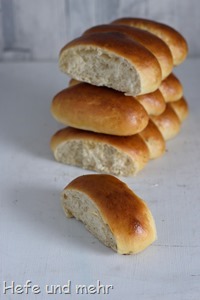
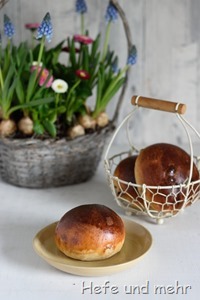
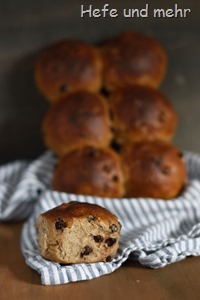
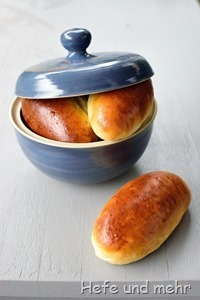
![Salzweck (1)[5] Salzweck (1)[5]](https://www.hefe-und-mehr.de/wp-content/uploads/2017/05/Salzweck-15_thumb.jpg) Another discovery of my search for regional breads is the Salzweck. Its a roll which stems from the region Baden and which is formed in a special way. Its rim is folded in a similar way like used for
Another discovery of my search for regional breads is the Salzweck. Its a roll which stems from the region Baden and which is formed in a special way. Its rim is folded in a similar way like used for 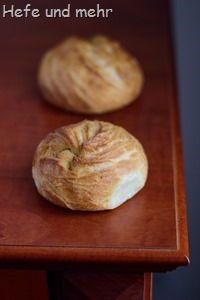
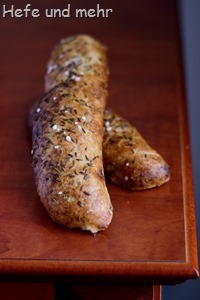
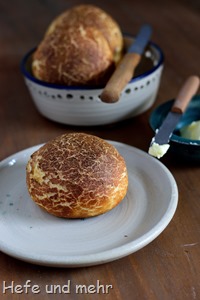 The next regional bread recipe is from Northern Germany, too. Or, to be more precise, from Osnabrück. It is a roll which roots in meagre days when good flour with a high amount of gluten was rare. The poor flour quality results in a finer, denser crumb and a smaller volume then normal rolls. To archive good looking rolls with a nice crust despite the flour quality the bakers used a trick. They spread the rolls with different kinds of mixtures which results on a crisp, and crackled crust. This special look of the crust gave the rolls their name “Springbrötchen” (lit. Cracked Rolls).
The next regional bread recipe is from Northern Germany, too. Or, to be more precise, from Osnabrück. It is a roll which roots in meagre days when good flour with a high amount of gluten was rare. The poor flour quality results in a finer, denser crumb and a smaller volume then normal rolls. To archive good looking rolls with a nice crust despite the flour quality the bakers used a trick. They spread the rolls with different kinds of mixtures which results on a crisp, and crackled crust. This special look of the crust gave the rolls their name “Springbrötchen” (lit. Cracked Rolls).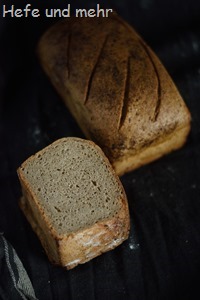 When I asked for suggestions of
When I asked for suggestions of